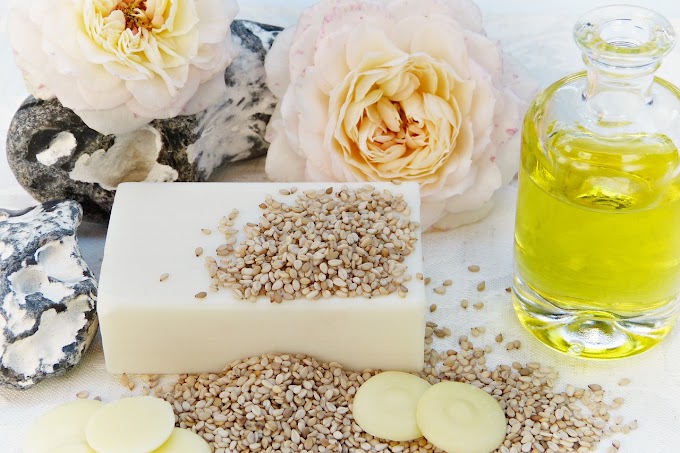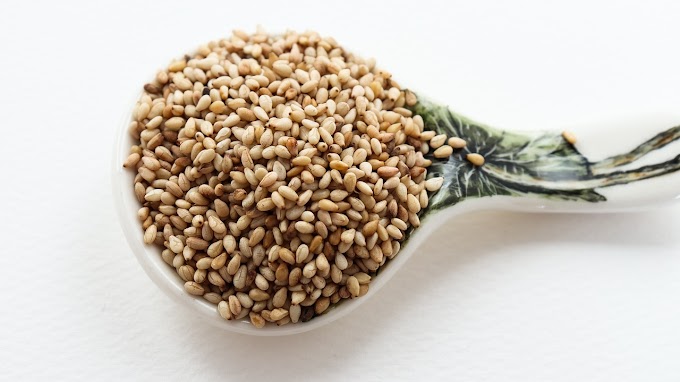Introduction
Within the realm of Ayurveda, an ancient system of medicine with a rich history of promoting healing and balance for thousands of years, the doshas play a pivotal role in shaping one's overall well-being. These doshas, namely Vata, Pitta, and Kapha, represent fundamental energies governing physical, mental, and emotional tendencies. In this exploration, we delve into the fiery force known as Pitta Dosha, understanding its characteristics, imbalances, and strategies for maintaining harmony for a healthier life.
Pitta Dosha:
Pitta, often referred to as the "fire" dosha, comprises the elements of fire and water. It governs essential metabolic processes such as digestion, absorption, and energy production. Responsible for managing appetite, intellect, and the radiant glow of the skin, balanced Pitta individuals are recognized for their warmth, sharpness, and robust digestion.
Characteristics of Pitta Dosha:
Fire and Water Balance: Pitta individuals exhibit a fiery nature, balanced by the soothing influence of the water element.
Sharp Intellect: Endowed with a keen intellect and the ability to focus, Pitta types are quick learners and natural problem solvers.
Strong Digestion: The fiery nature extends to their digestive system, resulting in a hearty appetite, efficient digestion, and effective food metabolism.
Radiant Skin: Balanced Pitta individuals often boast radiant skin and lustrous hair, with susceptibility to premature graying or hair loss when imbalanced.
Intensity: Pitta individuals can be strong-willed and competitive, yet possess a strong sense of justice and fairness.
Signs of Pitta Imbalance: Acidic Indigestion: Excessive internal heat can lead to acid reflux, heartburn, and inflammation of the digestive tract.
Skin Issues: Imbalances may manifest as skin irritations, hives, rashes, or breakouts due to an excess of heat.
Irritability: Elevated Pitta levels can result in irritability, anger, anxiety, and a critical disposition.
Overheating: Pitta individuals may experience intolerance to hot climates, excessive sweating, and difficulty cooling down.
Balancing Pitta Dosha:
Ayurveda offers holistic approaches to restore balance to an imbalanced Pitta dosha:
Diet: Consume cooling foods like cucumber, mint, coconut, and leafy greens while avoiding spicy, oily, and fried foods.
Lifestyle: Establish a routine with regular meal times, exercise, and relaxation. Avoid excessive exertion and intense competition.
Herbal Remedies: Incorporate herbs like aloe vera, coriander, and fennel into your diet to help alleviate excess Pitta.
Mindfulness: Practice relaxation techniques such as meditation and deep breathing to manage stress.
Stay Cool: Wear loose, breathable clothing and minimize exposure to the sun.
Mind-Body Practices:
Yoga: Include cooling and calming yoga poses like Shavasana, Bhujangasana, and Sitali Pranayama in your daily routine.
Meditation: Regular meditation helps calm the mind, reduce stress, and promote emotional balance.
Aromatherapy: Utilize essential oils like lavender, rose, and sandalwood with cooling and calming properties through diffusers, diluted application on the skin, or adding them to your bath.
Ayurvedic treatment:
Abhyanga (Oil Massage): Regular self-massage with cooling oils aids in balancing Pitta. Focus on massaging the scalp, forehead, and feet for maximum cooling effects.
Panchakarma: Consider Panchakarma treatment for Ayurvedic detoxification and rejuvenation to eliminate excess Pitta and restore balance.
Emotional Well-being: Express Yourself: Find healthy outlets for strong emotions through journaling, talking to a friend, or engaging in creative activities.
Avoid Exhaustion: Pitta types tend to overexert themselves, emphasizing the importance of rest and relaxation for maintaining balance.
Environmental Considerations: Create a Calming Environment: Use soothing colors and natural elements like plants to enhance the ambiance at home and work.
Reduce Heat Exposure: Minimize exposure to extreme heat, whether from the sun or indoor heating and stay hydrated during hot weather.
Professional Guidance: If you need more certainty about your Ayurvedic constitution or balancing Pitta dosha, seek advice from an Ayurvedic professional for personalized recommendations tailored to your unique makeup and imbalances.

Mind-Body Practices Continued:
Breathing Exercises: Incorporate cooling pranayama exercises like Sheetali and Sheetkari to calm the breath and cool the body from within.
Mindful Movement: Practices like Tai Chi or Qigong can provide gentle, mindful movements that help balance Pitta's energy and promote overall well-being.
Holistic Lifestyle Choices: Sleep Hygiene: Ensure adequate and restful sleep by maintaining a consistent sleep schedule and creating a calming bedtime routine.
Holistic Lifestyle Choices: Sleep Hygiene: Ensure adequate and restful sleep by maintaining a consistent sleep schedule and creating a calming bedtime routine.
Hydration: Stay well-hydrated with cool beverages, herbal teas, and coconut water to counterbalance Pitta's heat.
Balancing Emotions: Gratitude Practices: Cultivate a mindset of gratitude through daily practices, helping to shift focus from stressors to positive aspects of life.
Emotional Release Techniques: Explore methods like journaling, art therapy, or engaging in activities that allow for the expression and release of emotions.
Environmental Well-being: Nature Connection: Spend time in nature to connect with its calming energy. Consider walks in green spaces or spending time near water to enhance your connection with the natural world.
Clutter-Free Spaces: Maintain an organized and clutter-free environment to promote a sense of calm and order.
Nutritional Supplements: Aloe Vera Juice: Drinking aloe vera juice can have a cooling effect on the digestive system and help balance Pitta.
Digestive Bitters: Herbal bitters like gentian or dandelion root can support healthy digestion and alleviate excess Pitta.
Adapting to Seasons: Summer Practices: During the hot summer months, adjust your lifestyle by staying cool, staying hydrated, and opting for lighter meals to prevent Pitta aggravation.
Fall and Winter Adjustments: Embrace warming practices like wearing layers and consuming nourishing, grounding foods during colder seasons to balance Pitta.
Integrating Modern Approaches: Mind-Body Apps: Explore mindfulness and meditation apps to incorporate technology into your well-being routine, making it easier to practice relaxation techniques regularly.
Yoga Retreats and Workshops: Attend retreats or workshops focused on balancing doshas, providing immersive experiences to deepen your understanding and practice of Ayurveda.
Personalized Ayurvedic Consultations: Ayurvedic Practitioners: Seek guidance from experienced Ayurvedic practitioners for personalized consultations that consider your unique constitution, imbalances, and lifestyle.
Dosha-Specific Assessments: Explore online tools and resources that offer dosha-specific assessments, providing insights into your dominant dosha and personalized recommendations.
Conclusion:
Balancing Pitta dosha is a dynamic process that extends beyond traditional Ayurvedic practices. By incorporating additional elements into your routine, embracing modern approaches, and staying attuned to your body's responses, you can enhance your well-being and maintain harmony. Remember, the journey to balance is unique for each individual, and ongoing self-discovery plays a crucial role in achieving overall health and vitality.
FAQ's
Q1: What are the three doshas in Ayurveda, and why is Pitta dosha significant?A1: In Ayurveda, the three doshas are Vata, Pitta, and Kapha, representing fundamental energies governing various aspects of physical, mental, and emotional well-being. Pitta dosha, often referred to as the "fire" dosha, plays a crucial role in metabolic processes, digestion, and overall vitality.
Q2: How can I identify if my Pitta dosha is imbalanced?
Q2: How can I identify if my Pitta dosha is imbalanced?
A2: Imbalances in Pitta dosha may manifest as symptoms like acid reflux, skin irritations, irritability, and overheating. Pay attention to your digestion, emotional state, and sensitivity to heat as potential indicators of Pitta imbalance.
Q3: Can dietary changes help balance Pitta dosha?
Q3: Can dietary changes help balance Pitta dosha?
A3: Yes, dietary adjustments play a significant role in balancing Pitta dosha. Consuming cooling foods like cucumber, mint, coconut, and leafy greens while avoiding spicy and oily foods can help maintain harmony.
Q4: Are specific yoga poses and meditation techniques beneficial for Pitta dosha balance?
Q4: Are specific yoga poses and meditation techniques beneficial for Pitta dosha balance?
A4: Yes, incorporating cooling and calming yoga poses such as Shavasana, Bhujangasana, and Sitali Pranayama can be beneficial. Meditation techniques focusing on calming the mind and reducing stress contribute to Pitta dosha balance.
Q5: Can aromatherapy help in balancing Pitta dosha?
Q5: Can aromatherapy help in balancing Pitta dosha?
A5: Yes, aromatherapy can be a powerful tool. Essential oils like lavender rose, and sandalwood, known for their cooling and calming properties, can be used in diffusers, applied to the skin, or added to baths to support Pitta balance.
Q6: How does Panchakarma aid in balancing Pitta dosha?
Q6: How does Panchakarma aid in balancing Pitta dosha?
A6: Panchakarma is an Ayurvedic detoxification and rejuvenation treatment. It helps eliminate excess Pitta through therapeutic procedures, promoting overall balance and well-being.
Q7: Are there specific lifestyle practices to avoid Pitta imbalance?
Q7: Are there specific lifestyle practices to avoid Pitta imbalance?
A7: Yes, maintaining a routine with regular meal times, incorporating relaxation practices, avoiding overexertion, and creating a calm environment contribute to preventing Pitta imbalances.
Q8: Can I balance Pitta dosha on my own, or do I need professional guidance?
A8: While adopting Ayurvedic practices at home is beneficial, seeking professional guidance from an Ayurvedic practitioner ensures personalized recommendations based on your unique constitution and imbalances.
Q9: Are there specific Ayurvedic herbs that can help balance Pitta dosha?
Q9: Are there specific Ayurvedic herbs that can help balance Pitta dosha?
A9: Yes, herbs like aloe vera, coriander, and fennel are known for their cooling properties and can be incorporated into your diet to help alleviate excess Pitta.
Q10: How does exposure to nature contribute to balancing Pitta dosha?
Q10: How does exposure to nature contribute to balancing Pitta dosha?
A10: Spending time in nature helps connect with its calming energy, which can have a balancing effect on Pitta dosha. Green spaces and natural elements promote a sense of tranquility.
Q11: Can I practice these Ayurvedic principles during different seasons?
Q11: Can I practice these Ayurvedic principles during different seasons?
A11: Yes, Ayurvedic principles can be adapted to different seasons. Adjust your lifestyle, diet, and practices based on the climate – embracing cooling strategies in summer and warming practices in colder seasons.
Q12: Is there a specific duration for practicing Ayurvedic techniques to see results?
Q12: Is there a specific duration for practicing Ayurvedic techniques to see results?
A12: The duration for seeing results varies among individuals. Consistency is key. While some may experience changes quickly, others may take time. Be patient and observe how your body responds over time.







